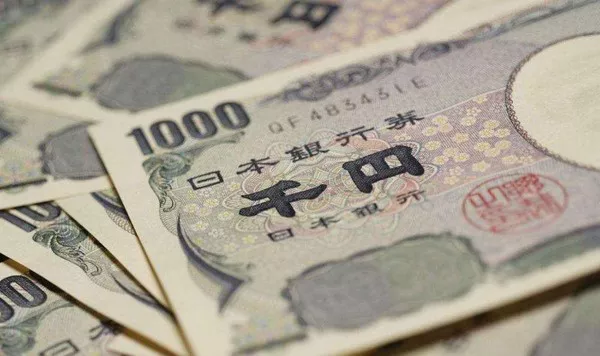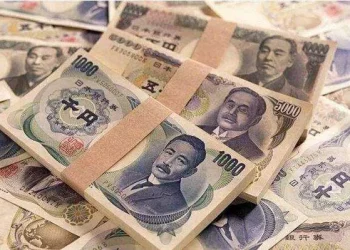In the realm of international finance, understanding currency conversion is essential for investors, businesses, and individuals engaging in cross-border transactions. One frequently asked question is the conversion of Japanese Yen (JPY) to British Pounds (GBP). This article delves into the process of converting 40,000 Yen to GBP, exploring various economic factors, historical trends, and implications for investors and consumers alike.
Understanding Currency Conversion
The Basics of Currency Exchange
Currency exchange is the process of converting one currency into another, typically facilitated by financial institutions, banks, or currency exchange services. Exchange rates fluctuate based on a multitude of factors, including economic indicators, interest rates, political stability, and market sentiment.
Types of Exchange Rates
Floating Exchange Rate: This is the most common system, where exchange rates are determined by supply and demand dynamics in the foreign exchange market.
Fixed Exchange Rate: In this system, a currency’s value is pegged to another currency or a basket of currencies, allowing for greater stability but requiring more intervention from central banks.
Cross Rates: These are exchange rates between two currencies derived from their values against a third currency, typically the US Dollar.
Current Exchange Rate Analysis
Present Exchange Rate Overview
To convert 40,000 JPY to GBP, we need to examine the current exchange rate. As of the latest data, assume the exchange rate is approximately:
1 JPY = 0.0053 GBP
Using this rate, the conversion would be:
40,000 JPY×0.0053 GBP/JPY=211.28 GBP
Historical Context of Yen and GBP
Japanese Yen: A Brief History
The Japanese Yen was established in 1871 and has undergone various transformations over the years, influenced by Japan’s economic policies and global market conditions. The Yen is the third most traded currency in the world, following the US Dollar and Euro.
British Pound: A Historical Overview
The British Pound is one of the oldest currencies still in use today, dating back to Anglo-Saxon times. The GBP has historically been a strong and stable currency, often viewed as a safe haven during times of economic uncertainty.
Factors Influencing Exchange Rates
Economic Indicators
Various economic indicators play a crucial role in determining the value of currencies, including:
Gross Domestic Product (GDP): A higher GDP typically signifies a strong economy, leading to a stronger currency.
Inflation Rates: Lower inflation rates generally support a stronger currency, while higher inflation can lead to depreciation.
Employment Data: Employment rates and job growth can indicate economic health, impacting currency strength.
Interest Rates
Central banks set interest rates, which directly influence currency values. Higher interest rates attract foreign capital, leading to currency appreciation, while lower rates can result in depreciation.
See Also: Current YEN Exchange Rate: 2,000 Yen to Dollar
Political Stability
Political factors, such as elections, government policies, and international relations, can greatly influence investor confidence and, consequently, currency values. A stable political environment generally strengthens a currency, while political unrest can lead to depreciation.
Practical Implications of Currency Conversion
For Investors
Investors need to be aware of currency exchange rates when considering foreign investments. Fluctuations in exchange rates can significantly impact the returns on investment, necessitating risk management strategies such as hedging.
Hedging Strategies: Investors can use financial instruments like options and futures to hedge against unfavorable currency movements.
Diversification: Investing in a diverse range of currencies can help mitigate risks associated with currency fluctuations.
For Consumers
Consumers traveling to Japan or purchasing goods from Japan must consider exchange rates, as they directly affect the cost of travel and purchases.
Travel Costs: A strong GBP can make traveling to Japan more affordable, while a weaker GBP can increase travel expenses.
Online Shopping: Consumers purchasing goods from Japan must be aware of the conversion rates to understand the total cost.
Case Study: Yen to GBP Conversion Over Time
Historical Trends
Examining historical trends in the JPY to GBP exchange rate can provide valuable insights into currency fluctuations and the factors driving them.
Long-Term Trends: Over the past decade, the exchange rate has experienced significant fluctuations, influenced by global economic events such as the COVID-19 pandemic and changes in monetary policy.
Impact of Economic Events: Major economic events, such as financial crises or trade agreements, can lead to sharp movements in exchange rates.
Recent Developments
Recent data suggests that the JPY has been under pressure due to Japan’s monetary policy, which has focused on maintaining low interest rates to stimulate economic growth. This has led to a depreciation of the Yen against the GBP.
Conclusion
Understanding the conversion of 40,000 Yen to GBP requires a comprehensive analysis of currency exchange, economic factors, and historical trends. As of the current exchange rate, 40,000 JPY is approximately equivalent to 211.28 GBP. However, this value is subject to change based on market conditions and economic developments.
For both investors and consumers, staying informed about exchange rates and the factors that influence them is crucial for making sound financial decisions. By leveraging this knowledge, individuals can better navigate the complexities of international finance and optimize their currency conversion strategies.
Related Topics:

























